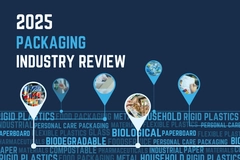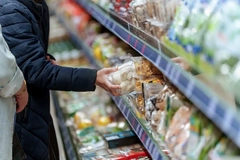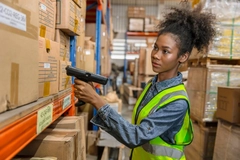Reusable packaging: Convenience and access drive consumer engagement

The momentum behind reuse is real, but success demands a pragmatic approach. Packaging Insights speaks to private enterprises Closed Loop Partners, Clean Cult, Vetropack, and Returnity about the latest industry developments in reusable packaging and the challenges the market faces.
The demand for reusable packaging solutions is growing alongside consumer awareness and a regulatory push against single-use models.
“Reusable and refillable packaging is no longer a niche concept — it’s becoming an expected part of modern product design,” says Ryan Lupberger, CEO at Clean Cult. “Reuse shouldn’t feel like a sacrifice, it should feel like second nature.”
“Today’s consumers want sustainability without compromising on convenience or performance. What used to be seen as an ‘eco-conscious’ decision is now a design-forward lifestyle choice.”
Carolina Lobel, senior director at the US Closed Loop Partners’ Center for the Circular Economy, says the organization’s goal is for reuse to become just another part of delivering goods and services — “not a niche offering, but a default option where it makes sense.”
Lobe argues that climate pressures, plastic waste concerns, and evolving regulations have sparked the reuse momentum. She outlines three “major achievements” from last year:
• Entire cities in Europe and in the US adopted foodservice reuse models
• Infrastructure is being developed to help producers meet regulatory targets
• New innovations enabling reuse and refill across e-commerce, in-store retail, and business-to-business supply chains.
 Closed Loop Partners launched its Petaluma Reusable Cup Project in 2024 (Image credit: Closed Loop Partners).“While reuse is growing quickly, several challenges must be addressed as well, including engaging consumers, driving business value, and delivering positive environmental results,” Lobel continues.
Closed Loop Partners launched its Petaluma Reusable Cup Project in 2024 (Image credit: Closed Loop Partners).“While reuse is growing quickly, several challenges must be addressed as well, including engaging consumers, driving business value, and delivering positive environmental results,” Lobel continues.
“These challenges push innovators, brands, cities, and policymakers to refine the approach to scale, push the boundaries of innovation, and strengthen collaboration, transitioning from siloed efforts toward pre-competitive partnerships, cross-industry initiatives, and strong public-private collaborations.”
Tangible reuse solutions
Lobel says that Closed Loop Partners’ work over the years has shown that for reuse to scale responsibly, it is imperative “to collaboratively create an easy and enjoyable consumer experience that makes it easy for customers to remember to bring their own containers or to return one that was given to them.”
“In line with this goal, we launched the Petaluma Reusable Cup Project in 2024, one of our boldest reuse initiatives. It is the first of its kind to make reusable packaging for foodservice the norm across an entire US city.”
“The project was the result of a collaboration between the global brands of the NextGen Consortium, an industry collaboration managed by the Center for the Circular Economy, the city government, local businesses, NGOs, and operational partners.”
Mike Newman, CEO at Returnity, says that “closed setting” reuse is a key trend in reusable packaging. “It is seeing significant growth, particularly for concert halls, stadiums, and school and corporate cafeterias, because operators are able to keep the packaging on-site at very high rates and achieve competitive unit economics.”
He also spotlights the company’s The Last Box. The fully recyclable shipping box made entirely from PP is being deployed at over 5,000 retail stores this summer, “offering partners lower packaging costs, increased operational efficiency, and a lower environmental footprint.”
 Clean Cult started by offering paper-based refill cartons (Image credit: Clean Cult).Lupberger says that Clean Cult started by offering paper-based refill cartons made from FSC-certified paperboard. The cartons are curbside recyclable and designed to cut waste.
Clean Cult started by offering paper-based refill cartons (Image credit: Clean Cult).Lupberger says that Clean Cult started by offering paper-based refill cartons made from FSC-certified paperboard. The cartons are curbside recyclable and designed to cut waste.
“To complete the system, we pair them with durable aluminum bottles that are lightweight, endlessly recyclable, and made to be refilled again and again.”
Simone Koch, communications director at Vetropack Group, says the company’s thermally tempered lightweight glass bottles represent “an important milestone on the path toward a reusable system with lower emissions.” She adds that the bottles have been established as a standard solution for the brewing industry in Austria last year.
“Well-known brands such as Gösser use these lightweight bottles for their products. In addition, Vetropack is developing digital traceability solutions such as Data Matrix codes on bottles to enable improved tracking and quality assurance throughout the lifecycle of reusable packaging.”
For and against tech
On the one hand, Vetropack’s Koch argues that technological innovation plays a central role in advancing reusable packaging.
 Vetropack offers thermally tempered lightweight glass bottles suitable for reuse (Image credit: Vetropack).“Vetropack’s thermally tempered lightweight glass reduces material usage and extends the lifespan (less scuffing) of bottles, making reuse more sustainable and economically attractive,” Koch outlines.
Vetropack offers thermally tempered lightweight glass bottles suitable for reuse (Image credit: Vetropack).“Vetropack’s thermally tempered lightweight glass reduces material usage and extends the lifespan (less scuffing) of bottles, making reuse more sustainable and economically attractive,” Koch outlines.
“Digital traceability, like data matrix codes on bottles, ensures precise tracking throughout the entire cycle and supports the efficient management of closed-loop systems. Combined with advanced inspection systems and proactive line audits, these technologies enhance product quality and help minimize losses due to breakage.”
On the other hand, Returnity’s Newman argues that while technology can support reuse systems, it is not likely to be “a game changer.”
“The best reuse systems are the simplest to run. The more technology you require to manage your inventory and monitor and motivate your users, the more expensive and complicated the program becomes.”
The future of reuse
Koch expects the demand for reusable packaging to grow as a result of stricter regulations and higher consumer expectations regarding sustainability.
She says that weight is a key aspect of reusable glass packaging: “Conventional reusable bottles are often heavier to withstand multiple cycles. Thermally tempered lightweight glass offers a more sustainable alternative by combining the required strength with significantly lower weight, reducing emissions and improving efficiency across the system.”
“In parallel, smart packaging and connected systems will allow for more efficient logistics and greater transparency across the value chain. In the future, solutions will focus on durability and maximizing the number of reuse cycles for each bottle.”
 The Last Box — a fully recyclable shipping box from PP (Image credit: Returnity).Also, discussing the role of regulations in driving reuse, Newman says that the EU’s Packaging and Packaging Waste Regulation (PPWR) has created “a lot of energy in the sector.”
The Last Box — a fully recyclable shipping box from PP (Image credit: Returnity).Also, discussing the role of regulations in driving reuse, Newman says that the EU’s Packaging and Packaging Waste Regulation (PPWR) has created “a lot of energy in the sector.”
“Though, there remain major gaps between the goals of the regulations and the real-world performance of reuse in those markets,” he adds.
“I am looking forward to seeing how the market starts to align to the realities of many reuse systems, where packaging may only be returned frequently enough to get 3–4 uses on average. I think that packaging designed for real-world durability needs, often with natural fibers, will be an area for growth.”
Lobel expects to see companies scaling their successful reuse pilots and standardization across systems and the growth of shared infrastructure (collection, washing, logistics) across cities and regions.
She further predicts “an expansion across sectors, beyond foodservice to retail, B2B supply chains and e-commerce, evolving regulation, which may increasingly require or incentivize reuse at scale, and new financing mechanisms to support infrastructure build-out and system growth.”











